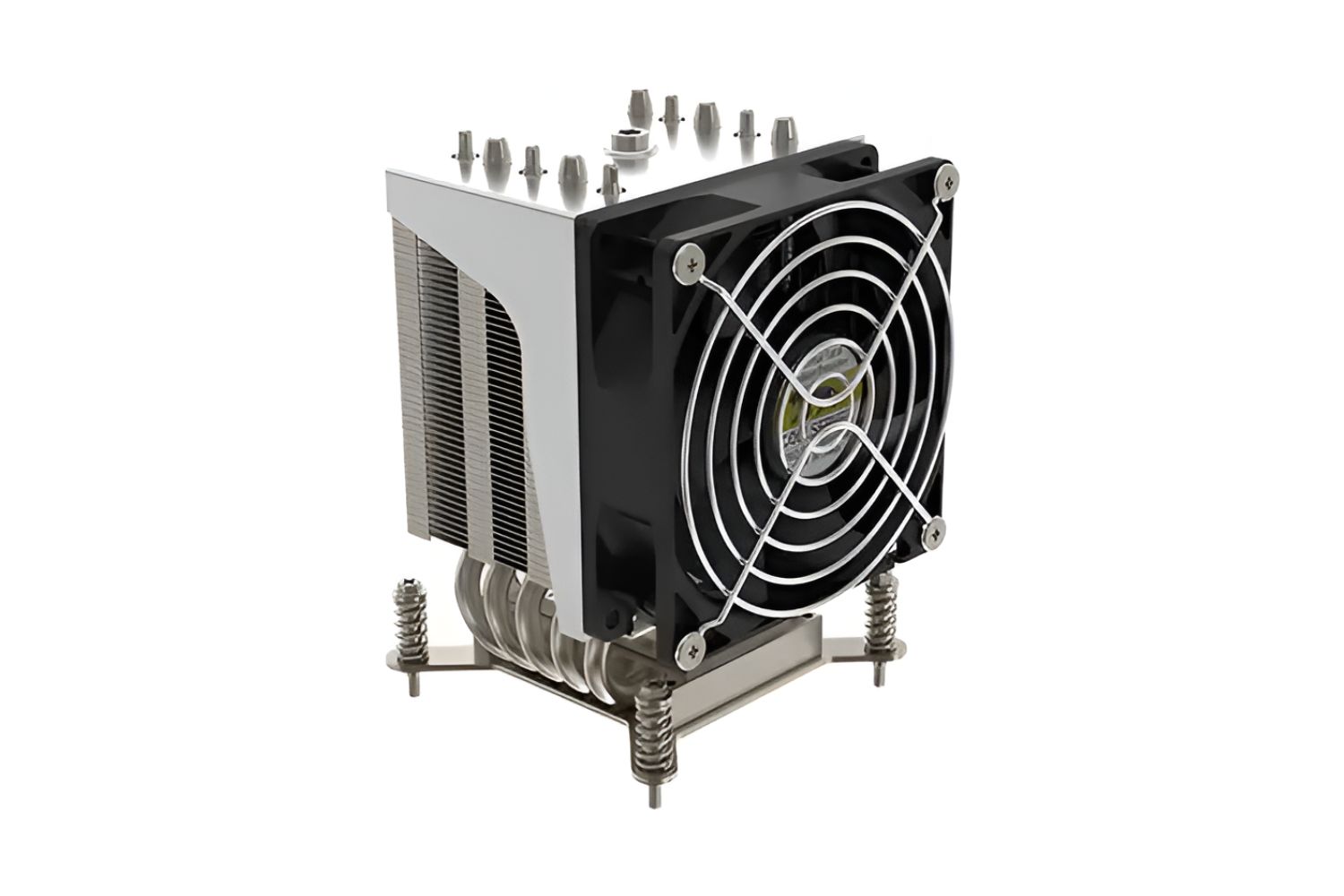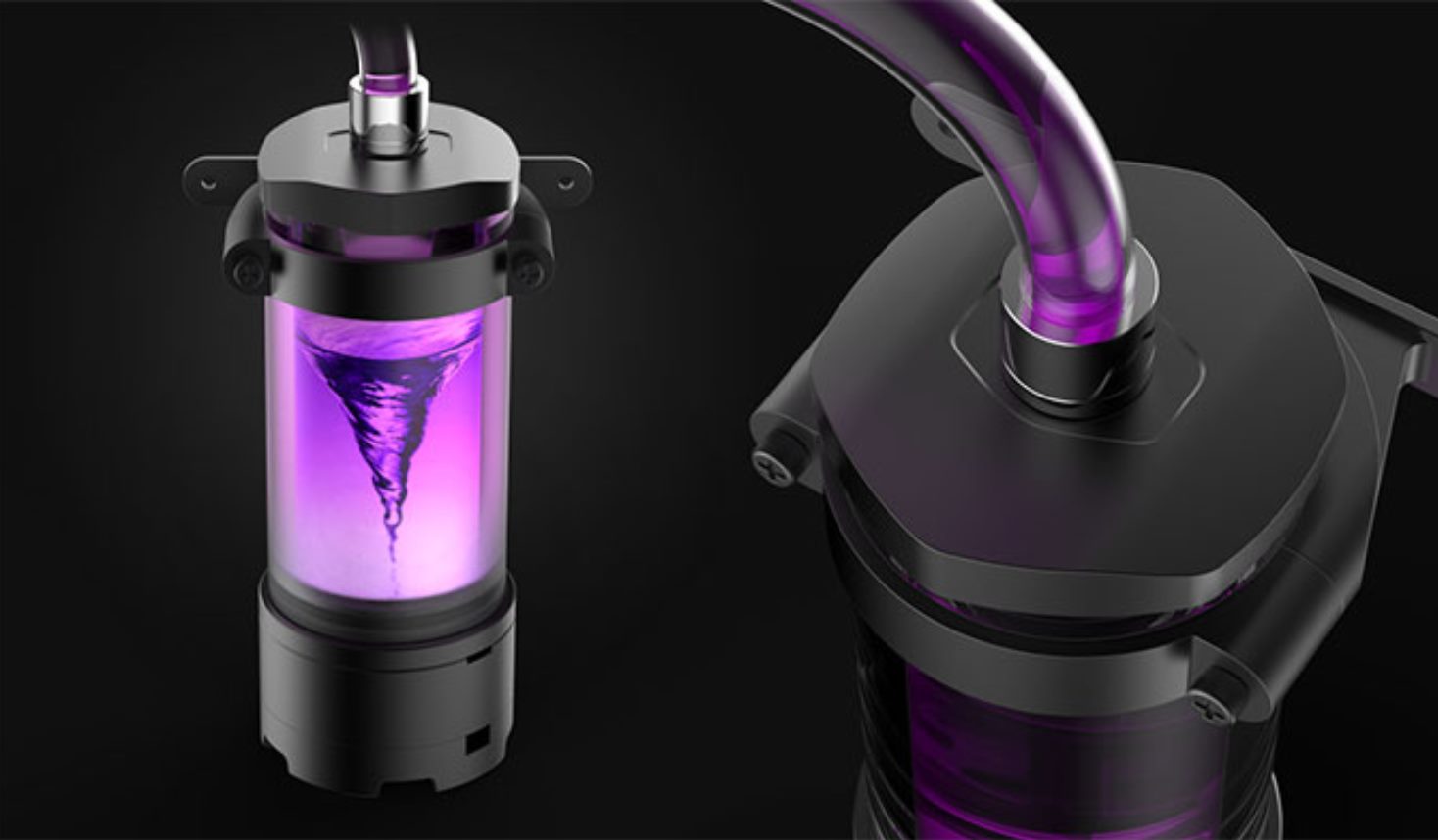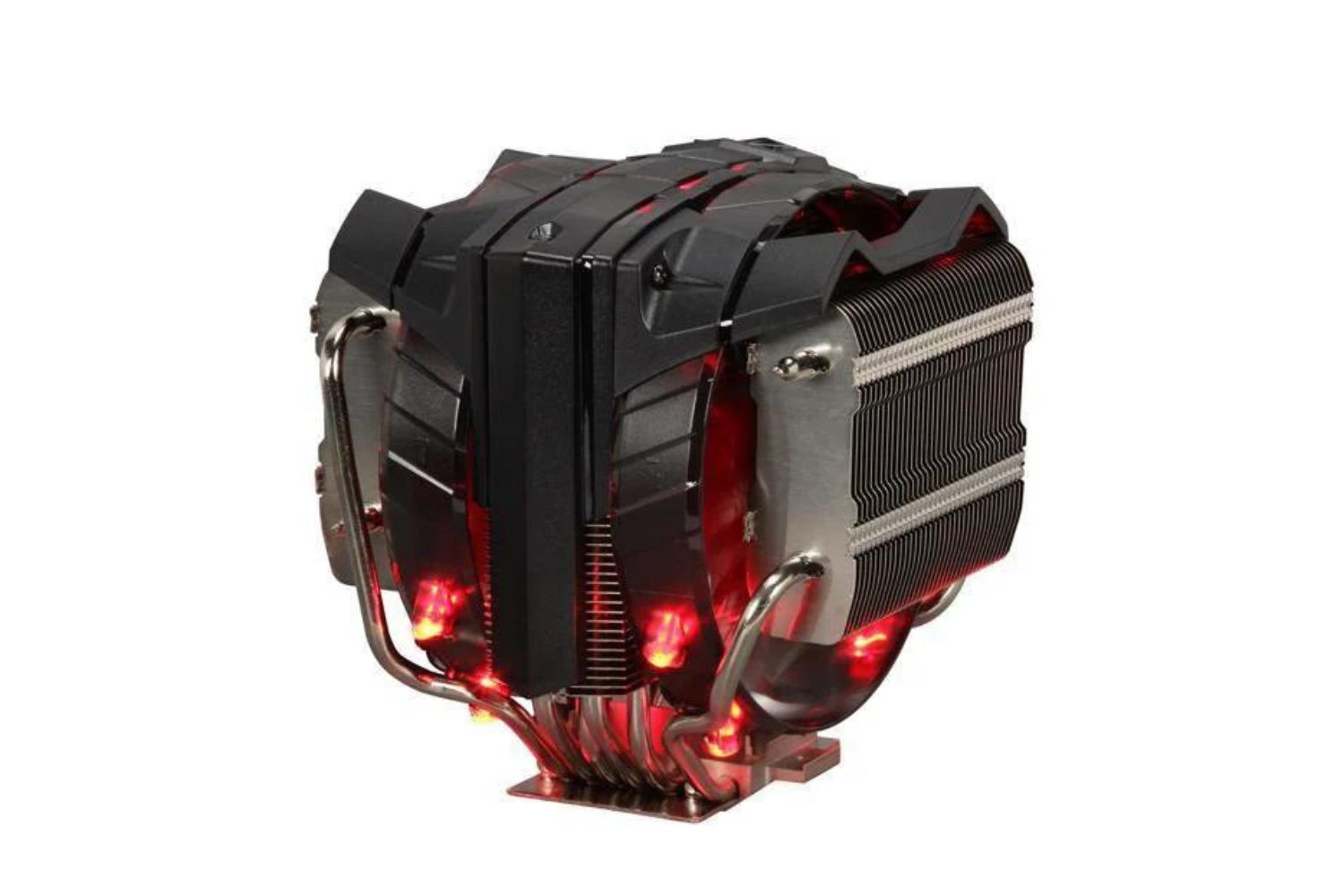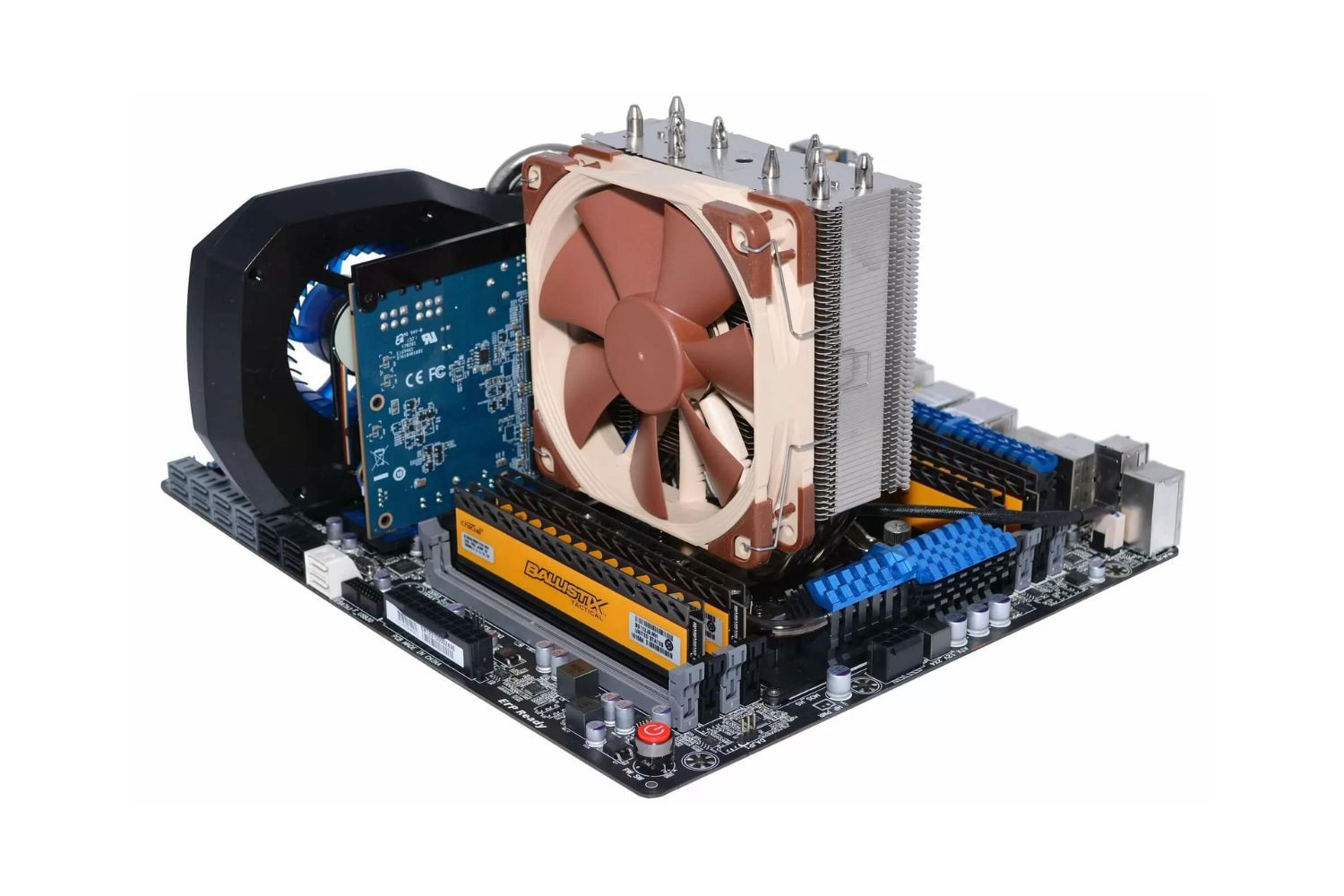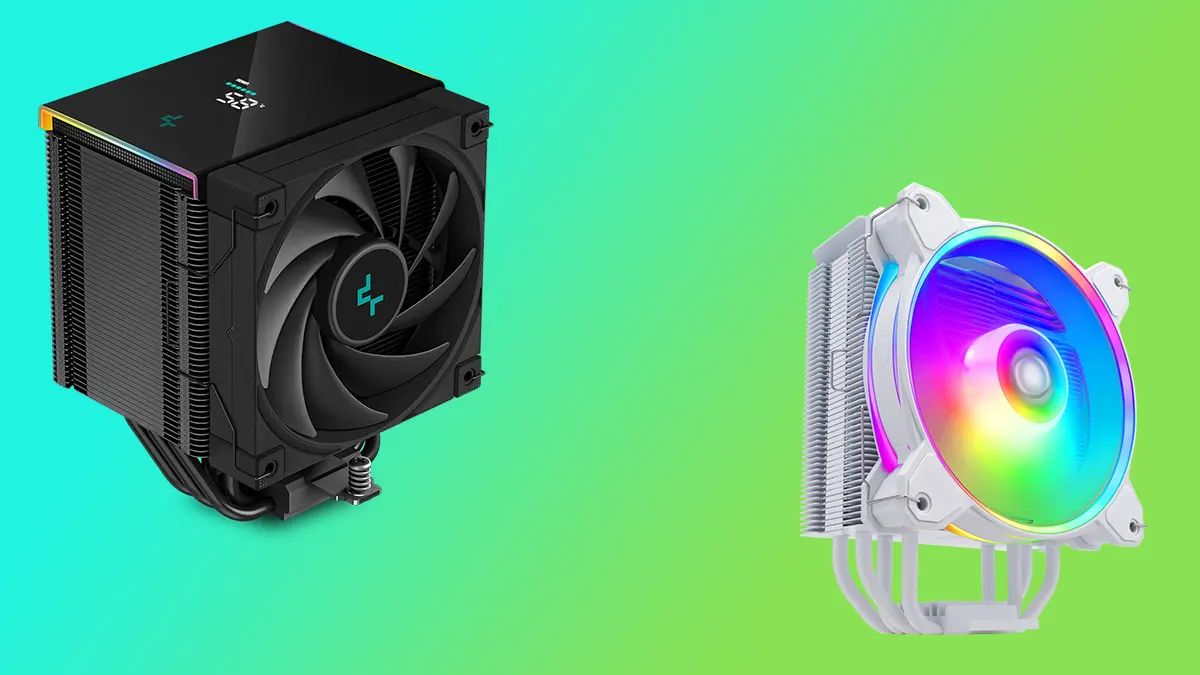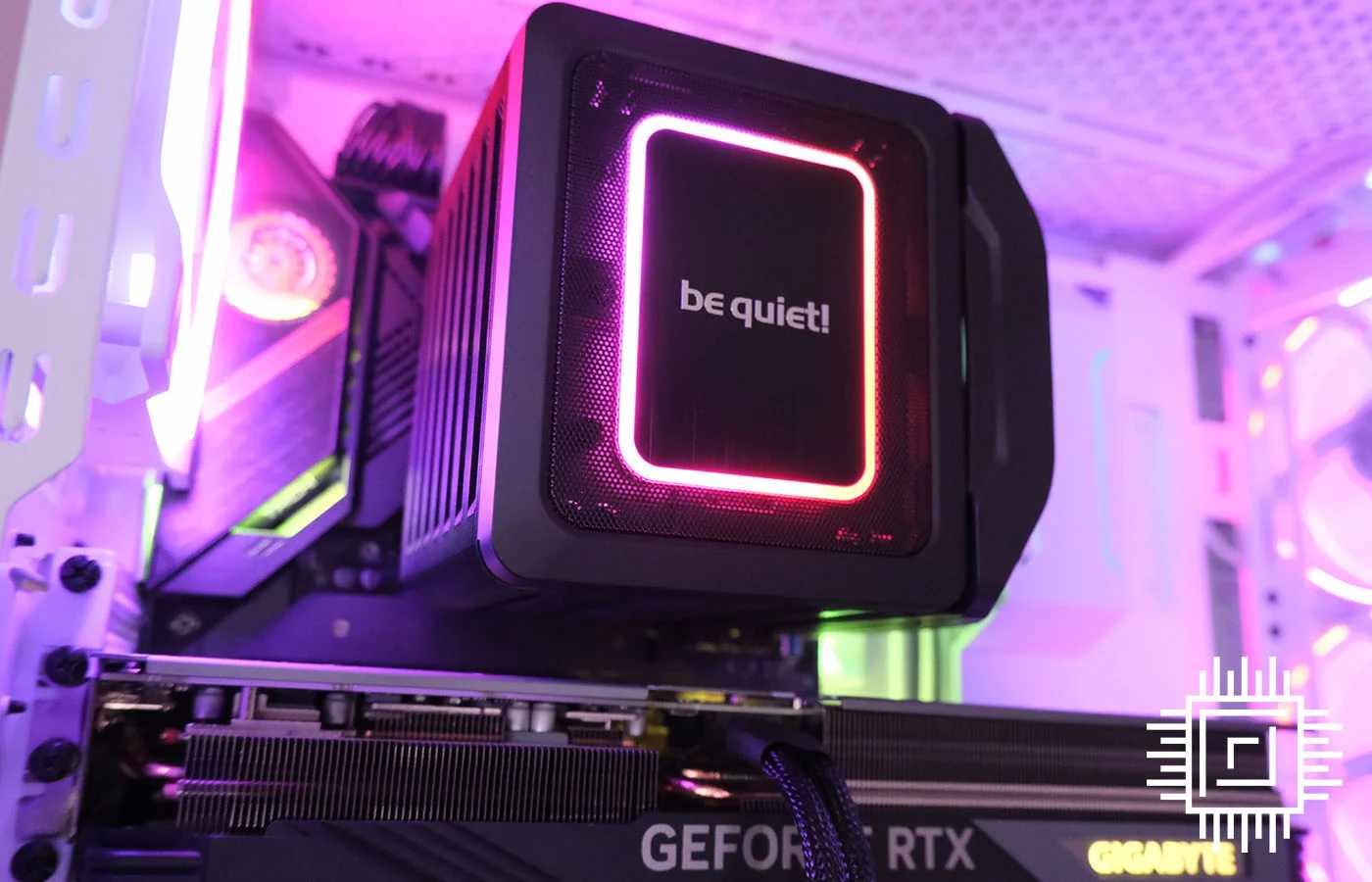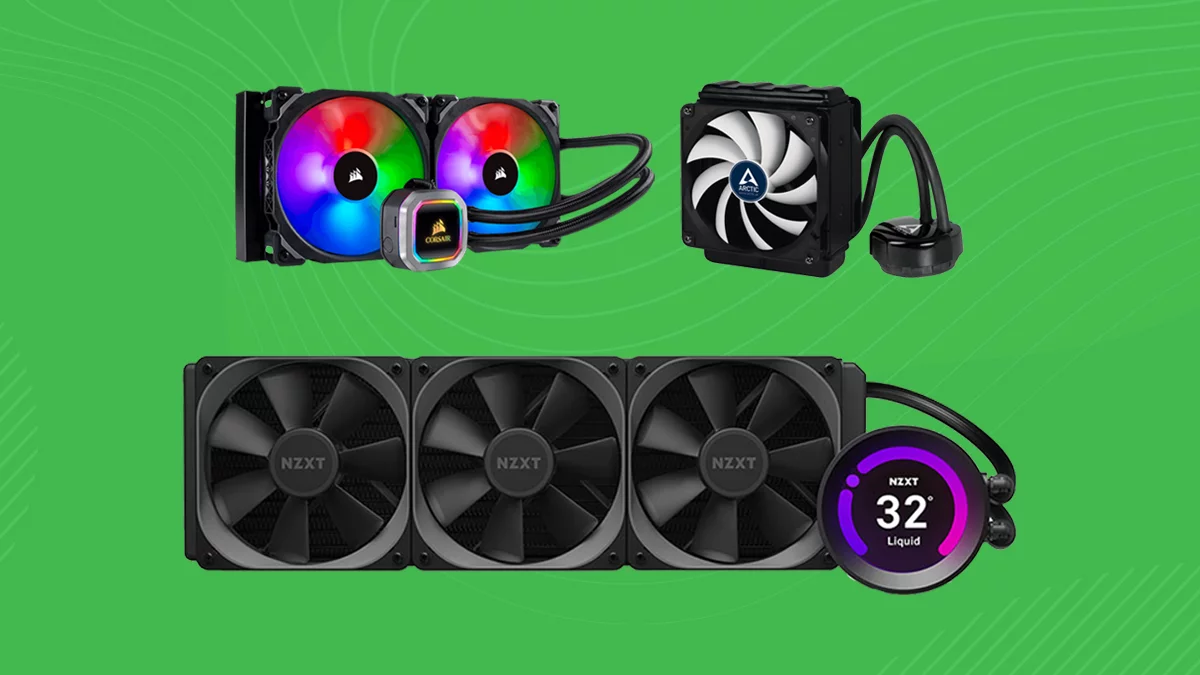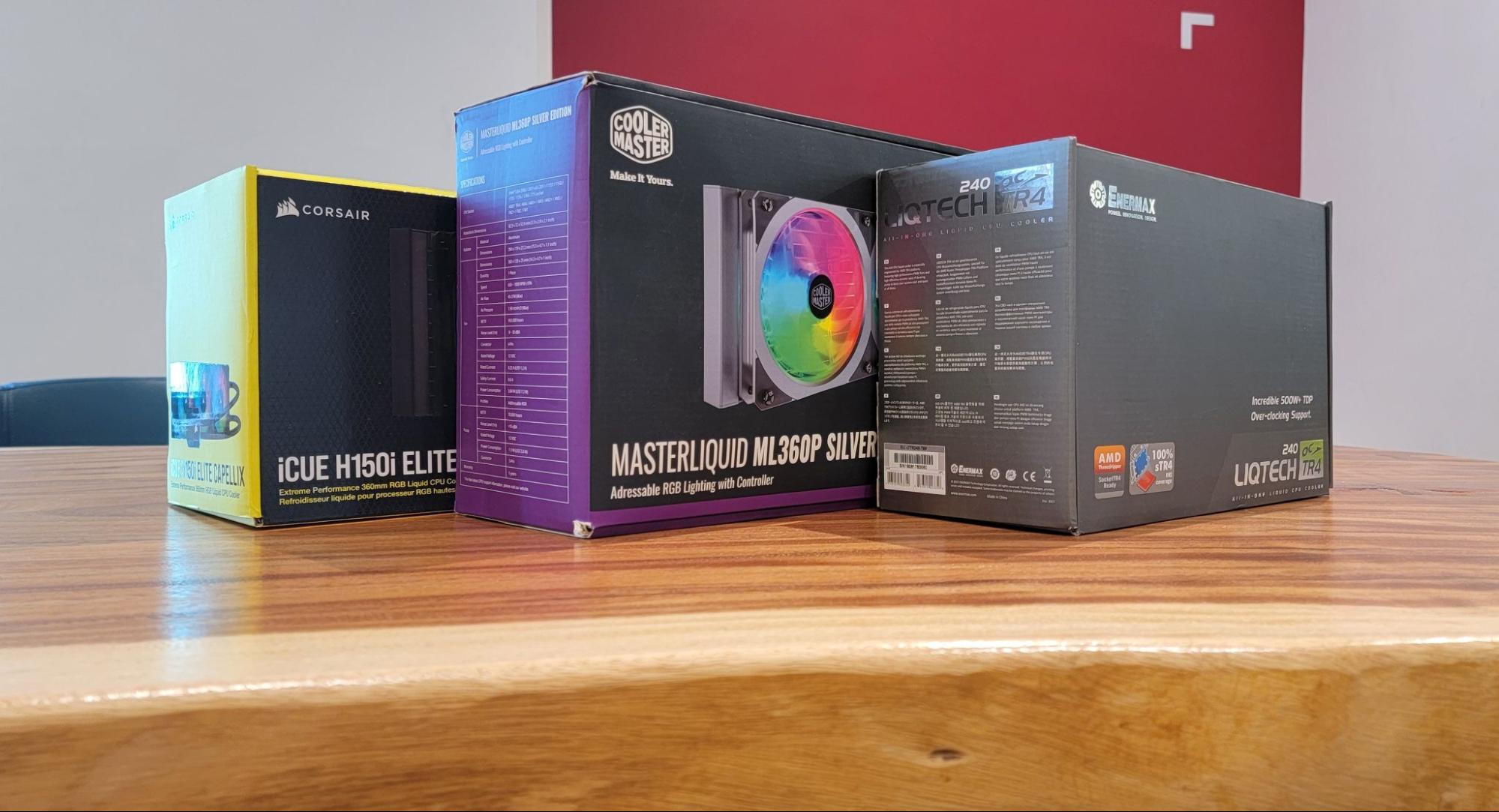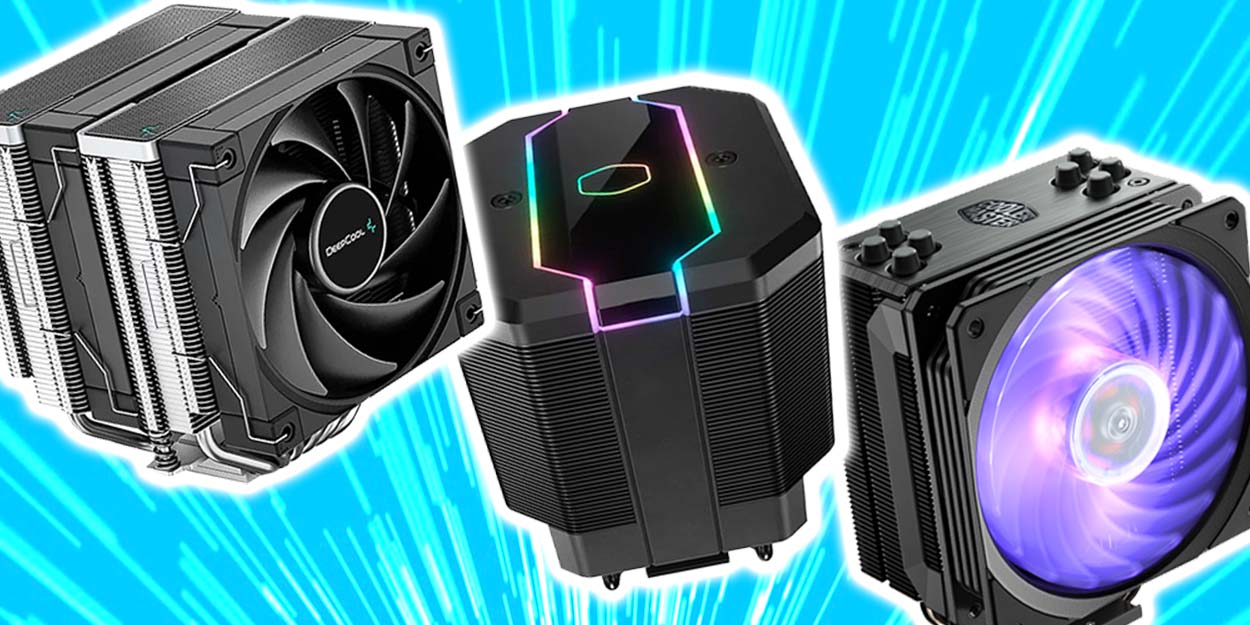Introduction
When it comes to keeping your computer cool, especially during intense gaming or resource-intensive tasks, a robust cooling system is essential. One of the key components of a high-performance cooling solution for CPUs is the use of heat pipes. These versatile and efficient devices have revolutionized cooling technology and are commonly incorporated into active CPU coolers.
In this article, we will delve into the role of heat pipes in CPU coolers and explore the benefits of using them. Before we dive into the details, let’s first understand what heat pipes are and how they function.
Heat pipes are heat transfer devices that employ the principles of phase change and thermodynamics to efficiently transfer heat from one point to another. Typically made of copper or aluminum, heat pipes consist of a sealed hollow tube with an inner wicking structure and a working fluid inside. When the temperature at the heat source increases, the working fluid evaporates, absorbing heat energy. This vapor then moves to the cooler end of the heat pipe, where it condenses back into liquid form, releasing heat.
While heat pipes have a wide range of applications in industries such as aerospace and electronics, they have gained significant popularity in the realm of computer cooling, especially in CPU coolers. CPU coolers are responsible for dissipating the heat generated by the CPU, keeping it operating within safe temperature limits. There are two main types of CPU coolers – active and passive.
Active CPU coolers, as the name suggests, rely on active cooling mechanisms, such as fans or water pumps, to facilitate heat dissipation. These coolers offer better thermal efficiency and are capable of handling higher heat loads compared to passive coolers. The incorporation of heat pipes in active CPU coolers has revolutionized their performance and reliability.
Having set the stage, we will now explore the specific role of heat pipes in active CPU coolers and elaborate on the numerous benefits they bring to the table. We will also highlight some popular active CPU coolers that utilize heat pipes for optimal thermal management.
So, let’s dive into the fascinating world of heat pipes in CPU coolers and discover how they contribute to the efficient cooling of your computer’s CPU.
Overview of Heat Pipes
Heat pipes, as mentioned earlier, are highly efficient heat transfer devices that play a vital role in dissipating heat in various applications. Understanding their key characteristics and operation is essential to grasp their significance in CPU cooling.
At their core, heat pipes are sealed tubes that contain a working fluid, usually water or a combination of water and other substances like ammonia or acetone. The choice of working fluid depends on the desired operating temperature range and other factors.
The inner walls of heat pipes are lined with a wick structure made of porous materials such as sintered powder or grooved metal. This wick structure enables the capillary action to occur, aiding in the movement of the working fluid.
The working principle of a heat pipe is based on phase change. When the heat is applied to the heat source (usually the CPU), the working fluid evaporates, absorbing the latent heat. This vapor moves to the cooler end of the heat pipe, where it dissipates heat, condenses back into a liquid, and returns to the heat source through the capillary action of the wick structure. This continuous cycle of evaporation, condensation, and liquid return ensures efficient heat transfer from the source to the cooler end.
The efficiency of heat pipes stems from their ability to transfer heat with minimal temperature drop along the length of the pipe. Due to the high thermal conductivity of the working fluid and the efficient movement of vapor, heat pipes can rapidly transport a considerable amount of heat over long distances.
Heat pipes exhibit various advantages that make them an ideal choice for CPU cooling. They have excellent heat transfer capabilities, high reliability, compact size, and silent operation. Additionally, they can operate in any orientation, making them suitable for both tower-style and horizontal CPU coolers.
In recent years, advancements in heat pipe technology have led to the development of different types of heat pipes, including flattened heat pipes and heat pipes with multiple heat sources. These variations allow for greater flexibility in design and enable better heat dissipation in tight spaces.
In the next sections, we will explore the specific implementation of heat pipes in active CPU coolers and delve into the benefits they bring to the table. By understanding the inner workings of heat pipes, you will gain a deeper appreciation for their role in keeping your CPU cool and enhancing overall system performance.
Types of CPU Coolers
Before we delve into the use of heat pipes in CPU coolers, let’s first understand the different types of CPU coolers available in the market today.
1. Air Coolers: Air coolers are the most common type of CPU coolers. They consist of a heatsink, which is usually made of aluminum or copper, and a fan that blows air over the heatsink. The heatsink dissipates the heat generated by the CPU, while the fan ensures adequate airflow to enhance cooling efficiency. Air coolers are affordable, easy to install, and generally provide sufficient cooling for most CPUs.
2. Liquid Coolers: Liquid coolers, also known as all-in-one (AIO) coolers, utilize liquid-based cooling systems. They consist of a pump, radiator, and liquid-filled tubes. The pump circulates the liquid coolant from the CPU block to the radiator, where heat is dissipated through fans. Liquid coolers offer better cooling performance and are ideal for overclocked CPUs or systems with high heat output. They are often more expensive and require more complex installation compared to air coolers.
3. Hybrid Coolers: Hybrid coolers combine the benefits of both air and liquid cooling. They feature a combination of a traditional heatsink and fan with a liquid cooling unit. The liquid cooling component is typically integrated into the base of the heatsink and acts as an additional heat dissipation mechanism. Hybrid coolers offer a balance between cooling performance and ease of installation, making them a popular choice among enthusiasts.
4. Passive Coolers: Passive coolers, also known as heatsink-only coolers, rely solely on the heatsink to dissipate heat. They do not incorporate fans or liquid cooling components, making them completely silent. Passive coolers are suitable for low-power CPUs or systems where noise is a concern. However, they are generally less effective at cooling high-performance CPUs or under heavy load scenarios.
It’s important to choose a CPU cooler based on your specific requirements, such as the processor’s thermal design power (TDP), available space within your computer case, and noise preferences. Heat pipes are commonly found in both air and liquid coolers, enhancing their cooling performance and efficiency.
Now that we have explored the various types of CPU coolers, let’s move on to understanding the role of heat pipes in active CPU coolers and how they contribute to better cooling performance.
Active CPU Coolers
Active CPU coolers are widely used in desktop computers and servers to dissipate the heat generated by the CPU. These coolers employ active cooling mechanisms, such as fans or water pumps, to enhance heat dissipation and maintain optimal CPU temperatures.
There are several reasons why active CPU coolers are preferred over passive coolers. Firstly, active coolers offer better thermal efficiency and are capable of handling higher heat loads. This is crucial, especially for high-performance CPUs used in gaming PCs, content creation systems, or server environments where the processor is constantly under heavy workloads.
Secondly, active CPU coolers help maintain consistent temperature levels by circulating cool air around the heatsink or transferring heat to a liquid coolant. This prevents overheating, which could lead to performance degradation or even system damage.
Active CPU coolers come in different forms, including both air coolers and liquid coolers. Air coolers use fans to blow air over the heatsink, while liquid coolers utilize a pump to circulate liquid coolant to dissipate heat.
Many active CPU coolers in the market today incorporate heat pipes into their design to enhance their cooling capabilities. Heat pipes provide a significant advantage by efficiently transferring heat from the CPU to the cooler, improving overall cooling performance.
Now, let’s explore the specific role of heat pipes in active CPU coolers and understand why they are such a crucial component in these cooling solutions.
Heat Pipes in Active CPU Coolers
Heat pipes play a crucial role in enhancing the cooling performance of active CPU coolers. By incorporating heat pipes into the design, these coolers can effectively transfer heat away from the CPU and dissipate it more efficiently.
In active CPU coolers, heat pipes are typically integrated into the heatsink assembly. They act as a highly efficient conduit for heat transfer, enabling the cooler to effectively draw heat away from the CPU and disperse it.
The heat pipes in active CPU coolers work on the principles of phase change and thermodynamics. When the CPU generates heat, the heat pipes absorb this heat through their wick structure. The working fluid inside the heat pipes vaporizes, carrying the thermal energy away from the CPU.
The vaporized working fluid moves towards the cooler end of the heat pipe, where it encounters cooler air or liquid. As the temperature decreases, the vapor condenses back into a liquid state, releasing the heat it absorbed. This heat is then dissipated into the surrounding environment either through the heatsink’s fins or the liquid cooling system.
By utilizing heat pipes, active CPU coolers are able to transport heat more efficiently than traditional cooling solutions. The high thermal conductivity of the working fluid and the capillary action within the heat pipes ensure that thermal energy is quickly transferred from the CPU to the heat sink or liquid cooling system.
Furthermore, heat pipes allow for more effective heat distribution across the heatsink or radiator. The intricate network of heat pipes disperses heat evenly, maximizing the surface area available for heat dissipation. This results in more efficient cooling and helps prevent hotspots on the CPU, which can lead to thermal throttling or long-term damage.
The use of heat pipes in active CPU coolers also contributes to noise reduction. As the heat pipes efficiently transfer heat away from the CPU, the cooling fans or pumps can operate at lower speeds, resulting in quieter operation. This is particularly beneficial for users who prioritize a silent computing environment.
In summary, the incorporation of heat pipes in active CPU coolers is crucial for their efficient cooling performance. By harnessing the principles of phase change and thermodynamics, heat pipes enable rapid and efficient heat transfer, ensuring that the CPU operates at optimal temperature levels.
Now, let’s move on to explore the numerous benefits of using heat pipes in CPU coolers and understand why they have become a popular choice in the market.
Benefits of Using Heat Pipes in CPU Coolers
The incorporation of heat pipes in CPU coolers brings numerous benefits that enhance the cooling performance and efficiency of these cooling solutions. Let’s explore the key advantages of using heat pipes in CPU coolers:
1. Enhanced Heat Transfer: Heat pipes enable efficient heat transfer from the CPU to the cooling components. The high thermal conductivity of the working fluid and the capillary action within the heat pipes facilitate rapid and effective heat dissipation, ensuring that the CPU operates at optimal temperatures.
2. Improved Cooling Efficiency: Heat pipes distribute heat evenly across the heatsink or radiator, maximizing the available surface area for heat dissipation. This leads to more efficient cooling and helps prevent the formation of hotspots on the CPU, which can negatively impact performance and longevity.
3. Better Thermal Management: Heat pipes help maintain consistent CPU temperatures, even under heavy workloads or overclocking scenarios. By swiftly transferring heat away from the CPU, heat pipes prevent overheating and ensure stable and reliable system performance.
4. Noise Reduction: The efficient heat transfer achieved by heat pipes allows cooling fans or pumps to operate at lower speeds. This results in reduced noise levels, providing a quieter computing environment for users who value silence.
5. Compact Design: Heat pipes enable CPU coolers to have a compact form factor while still delivering exceptional cooling performance. This is particularly advantageous for systems with limited space, such as small form factor PCs, where efficient heat dissipation is crucial.
6. Reliable and Long-lasting: Heat pipes are known for their high reliability and durability. Their sealed design prevents leakage, ensuring long-lasting performance. Additionally, heat pipes have no moving parts, reducing the risk of mechanical failure.
7. Versatility: Heat pipes can operate effectively in various orientations, making them suitable for different CPU cooler designs. Whether it’s a tower-style cooler or a horizontal cooler, heat pipes can efficiently transfer heat in any configuration.
8. Cost-effective: Heat pipes offer a cost-effective solution for CPU cooling. They provide excellent performance at a relatively affordable price compared to more complex cooling technologies.
Incorporating heat pipes in CPU coolers significantly enhances their capability to effectively dissipate heat, improving the overall stability and performance of your computer system. The combination of enhanced cooling efficiency, noise reduction, compact design, and reliability make heat pipes an essential component in modern CPU coolers.
Now, let’s take a look at some of the popular active CPU coolers in the market that utilize heat pipes to deliver exceptional cooling performance.
Popular Active CPU Coolers That Use Heat Pipes
The market is flooded with a wide range of active CPU coolers that make use of heat pipes to deliver excellent cooling performance. Let’s take a look at some of the popular models known for their effective heat dissipation capabilities:
1. Noctua NH-D15: The Noctua NH-D15 is a renowned dual-tower air cooler that utilizes six heat pipes to efficiently transfer heat from the CPU to the aluminum fins. It offers exceptional cooling performance, low noise levels, and easy installation, making it a popular choice among PC enthusiasts.
2. Cooler Master Hyper 212 Evo: The Cooler Master Hyper 212 Evo is a budget-friendly air cooler that features four direct-contact heat pipes. These heat pipes directly touch the CPU surface, ensuring efficient heat transfer. The Hyper 212 Evo is known for its excellent cooling performance and widespread compatibility with various CPU sockets.
3. Corsair H100i RGB Platinum: The Corsair H100i RGB Platinum is an all-in-one liquid cooler that combines the power of heat pipes and liquid cooling. It features a 240mm radiator connected to a pump that circulates the liquid coolant. The heat pipes integrated into the base of the cooler enhance heat dissipation, resulting in efficient cooling for high-performance CPUs.
4. be quiet! Dark Rock Pro 4: The be quiet! Dark Rock Pro 4 is an exceptional air cooler that utilizes seven high-performance heat pipes to transfer heat away from the CPU. Its dual-tower design, along with a silent 135mm fan, ensures efficient cooling while operating silently.
5. NZXT Kraken X62: The NZXT Kraken X62 is a popular liquid cooler that boasts a 280mm radiator and a pump with integrated heat pipes. This combination provides efficient heat dissipation, allowing for superior cooling performance while maintaining low noise levels.
6. Thermalright Le Grand Macho RT: The Thermalright Le Grand Macho RT is a massive air cooler that utilizes multiple heat pipes to deliver exceptional cooling efficiency. With its large heatsink and multiple heat pipe design, it is capable of handling high TDP CPUs effectively.
These are just a few examples of popular active CPU coolers that incorporate heat pipes into their design. Each of these coolers offers excellent cooling performance, reliability, and ease of installation. However, it’s essential to consider factors such as CPU compatibility, case size, and personal preferences when choosing the right CPU cooler for your specific needs.
Now that we’ve learned about the benefits of using heat pipes in CPU coolers and explored some popular models, let’s wrap up our discussion on the importance of heat pipes in active CPU cooling.
Conclusion
Heat pipes play a crucial role in the efficient cooling of CPUs, particularly in active CPU coolers. These versatile devices enhance the transfer of heat from the CPU to the cooling components, ensuring optimal operating temperatures and system stability.
By utilizing the principles of phase change and thermodynamics, heat pipes efficiently transport heat away from the CPU. This allows for better heat dissipation, improved cooling efficiency, and reduced risk of overheating.
The incorporation of heat pipes in CPU coolers brings numerous benefits. It enhances heat transfer, improves cooling efficiency, offers better thermal management, reduces noise levels, and allows for a compact design. These advantages make heat pipes an essential component in modern CPU cooling solutions.
Various active CPU coolers on the market utilize heat pipes to deliver exceptional cooling performance. From air coolers like the Noctua NH-D15 and Cooler Master Hyper 212 Evo to liquid coolers like the Corsair H100i RGB Platinum and NZXT Kraken X62, these models offer efficient heat dissipation through their integrated heat pipes.
Choosing the right CPU cooler with heat pipe technology depends on factors like CPU compatibility, case size, budget, and personal preferences. However, regardless of the specific model, the integration of heat pipes enhances cooling efficiency and helps maintain optimal CPU temperatures.
In conclusion, heat pipes have revolutionized CPU cooling by providing efficient heat transfer and enabling superior cooling performance. They play a vital role in active CPU coolers, contributing to reliable system operation, extended component lifespan, and enhanced overall computer performance. Whether you are a gamer, content creator, or have a high-performance workstation, investing in a CPU cooler with heat pipe technology is a wise decision to ensure efficient and reliable cooling for your CPU.







